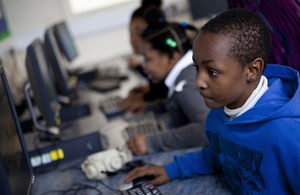GCSE exams are just around the corner, which means grades and grading scales are going to be an important point of reference your child. With all the recent changes to the grading system and exam format in England, it can certainly be a confusing time for parents and students! To ensure you're up to date with all these alterations, we've written a blog post covering one of the biggest changes; the new GCSE grading system.
What is changing exactly?
The main change parents and students are going to see is a completely new way of grading. The existing A*-G GCSE grades are going to be gradually phased out and a numerical grading system of 9-1 will be taking its place.
What does the 9-1 grading system mean exactly?
In the new 9-1 grading system, 9 will be the highest achievable grade and 1 will be the lowest. For students who fail to achieve the minimum points needed to reach a grade 1, there will still be a grade U.
When directly comparing the 9-1 system against the current A*-G grades, it can get a little trickier. The new scale has been specifically designed so there’s no direct read across from the old to new grades. However, you can expect certain numbers to represent a range of grades taken from the old spectrum.
Students can expect:
- Grades 9, 8 and 7 to represent a range of A*-A
- Grades 6, 5 and 4 will range from B to C
- 3, 2 and 1 will represent a range of D to G.
When are these changes happening?
You can expect to start seeing the new grade scale being introduced in England this summer, as this is when we see the new style English Language, English Literature and Mathematics exams take place. These subjects were the first to undergo the GCSE reform and were taught from September 2015, with the intention of using the new 9-1 grading system.
Another 20 subjects will have the 9-1 grading in place for 2018, with the rest following in 2019. It’s important to be aware that during this period of transition, your child may receive a mix of number and letter grades.
Why has this new grading system been introduced?
There are a few reasons behind this major change, the first being that the new 9-1 system signals that GCSE’s have been reformed and aren’t the same as they used to be. Ofqual have also highlighted that the new grading scale will be much better at differentiating students of different abilities. More specifically it should be able to reveal differences between students at the higher end of the spectrum, as grades 9,8 and 7 will replace the older A and A* grades.
New GCSE content is set to be much more challenging, with fewer grade 9’s awarded compared to the current A*s.
Where can I find out more information?
For more information on the new grading system, AQA have a great web page and short video here: http://www.aqa.org.uk/about-us/what-we-do/policy/gcse-and-a-level-changes/9-1
If it is new grade descriptors you’re after, then this page on gov.uk will be extremely helpful: https://www.gov.uk/government/publications/grade-descriptors-for-gcses-graded-9-to-1
Finally, if you just want general details on the changes to GCSE and A-Levels, then head to the official Ofqual page: https://www.gov.uk/government/organisations/ofqual.






